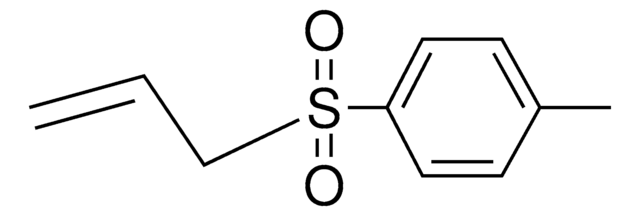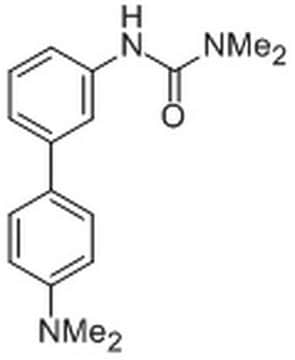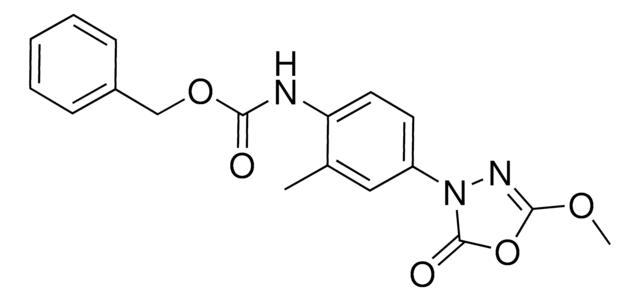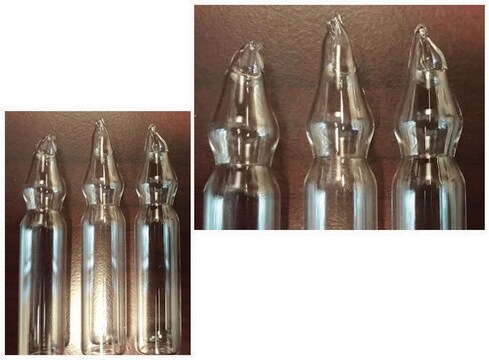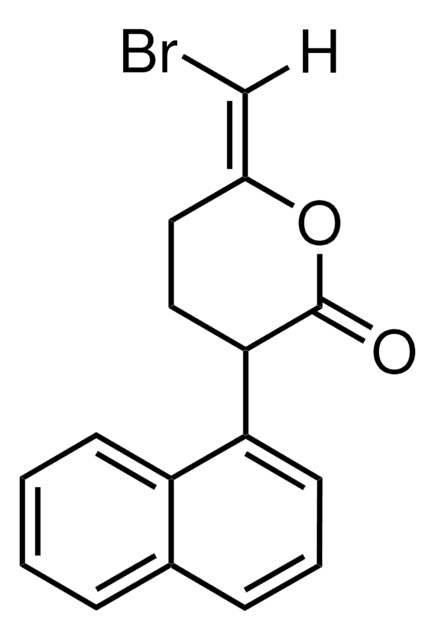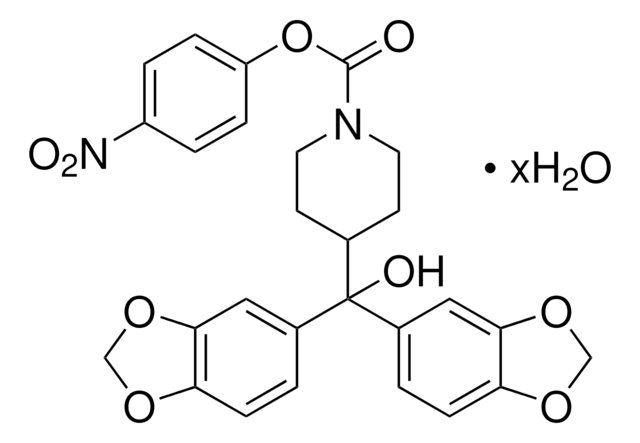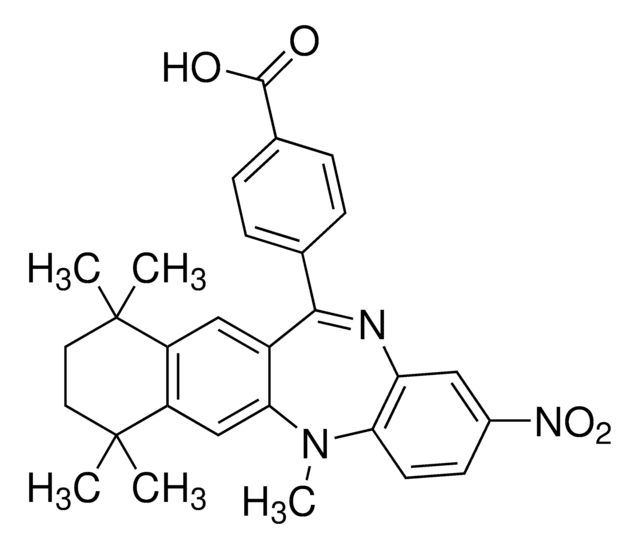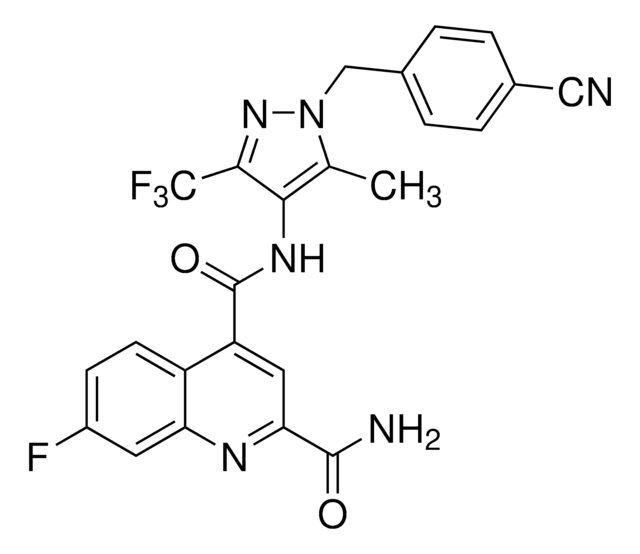SML1075
Atglistatin
≥98% (HPLC), powder, adipose triglyceride lipase inhibitor
동의어(들):
3-(4′-(Dimethylamino)-[1,1′-biphenyl]-3-yl)-1,1-dimethylurea
로그인조직 및 계약 가격 보기
모든 사진(1)
About This Item
실험식(Hill 표기법):
C17H21N3O
CAS Number:
Molecular Weight:
283.37
MDL number:
UNSPSC 코드:
12352200
PubChem Substance ID:
NACRES:
NA.77
추천 제품
제품명
Atglistatin, ≥98% (HPLC)
Quality Level
분석
≥98% (HPLC)
양식
powder
색상
white to beige
solubility
DMSO: 20 mg/mL, clear
저장 온도
2-8°C
SMILES string
CN(C)C(NC1=CC=CC(C2=CC=C(N(C)C)C=C2)=C1)=O
InChI
1S/C17H21N3O/c1-19(2)16-10-8-13(9-11-16)14-6-5-7-15(12-14)18-17(21)20(3)4/h5-12H,1-4H3,(H,18,21)
InChI key
AWOPBSAJHCUSAS-UHFFFAOYSA-N
애플리케이션
Atglistatin has been used as a selective inhibitor of adipose triglyceride lipase (ATGL).
생화학적/생리학적 작용
Atglistatin is a selective inhibitor of adipose triglyceride lipase (ATGL).
Atglistatin is the first selective inhibitor of adipose triglyceride lipase (ATGL), the rate limiting enzyme involved in the mobilization of fatty acids from cellular triglyceride stores. Atglistatin has an IC50 of 0.7 μM in E.coli and no activity against monoglycerol lipase (MGL), hormone-sensitive lipase (HSL), or pancreatic lipase and lipoprotein lipase PNPLA6 and PNPLA7. ATGL generates diacylglycerol from cellular triglyceride stores, which is then degraded by hormone-sensitive lipase (HSL) and monoglyceride lipase into glycerol and fatty acids, promoting the synthesis of lipotoxic metabolites that have been associated with the development of insulin resistance. Atglistatin inhibition of ATGL has been shown to reduce fatty acid mobilization in vitro and in vivo.
기타 정보
Produced under the license of University of Graz/Graz University of Technolog
Storage Class Code
11 - Combustible Solids
WGK
WGK 3
Flash Point (°F)
Not applicable
Flash Point (°C)
Not applicable
가장 최신 버전 중 하나를 선택하세요:
이미 열람한 고객
Phosphorylation of Beta-3 adrenergic receptor at serine 247 by ERK MAP kinase drives lipolysis in obese adipocytes.
Hong S, et al.
Molecular Metabolism (2018)
Hongyi Zhou et al.
JCI insight, 5 (2019-06-12)
Mutations in BSCL2 gene underlie human type 2 Berardinelli-Seip Congenital Lipodystrophy (BSCL2) disease. Global Bscl2-/- mice recapitulate human BSCL2 lipodystrophy and develop insulin resistance and hypertrophic cardiomyopathy. The pathological mechanisms underlying the development of lipodystrophy and cardiomyopathy in BSCL2 are
Xirui Liu et al.
Molecular cancer, 17(1), 90-90 (2018-05-17)
Abnormal metabolism, including abnormal lipid metabolism, is a hallmark of cancer cells. Some studies have demonstrated that the lipogenic pathway might promote the development of hepatocellular carcinoma (HCC). However, the role of the lipolytic pathway in HCC has not been
Lena Pernas et al.
Cell metabolism, 27(4), 886-897 (2018-04-05)
How intracellular pathogens acquire essential non-diffusible host metabolites and whether the host cell counteracts the siphoning of these nutrients by its invaders are open questions. Here we show that host mitochondria fuse during infection by the intracellular parasite Toxoplasma gondii
Kasparas Petkevicius et al.
FASEB journal : official publication of the Federation of American Societies for Experimental Biology, 35(2), e21266-e21266 (2021-01-24)
Tissue-resident macrophages are required for homeostasis, but also contribute to tissue dysfunction in pathophysiological states. The sympathetic neurotransmitter norepinephrine (NE) induces an anti-inflammatory and tissue-reparative phenotype in macrophages. As NE has a well-established role in promoting triglyceride lipolysis in adipocytes
관련 콘텐츠
Discover Bioactive Small Molecules for Lipid Signaling Research
자사의 과학자팀은 생명 과학, 재료 과학, 화학 합성, 크로마토그래피, 분석 및 기타 많은 영역을 포함한 모든 과학 분야에 경험이 있습니다..
고객지원팀으로 연락바랍니다.